Grapevine, thanks to its climbing habit, likes to take over pergolas, walls, wire fencing and other supports. In fact, growing grapes on a trellis dates back centuries and still exists in some wine regions. In the garden, growing grapevine on a trellis helps optimise space or provide shade for a terrace, while producing an abundant grape harvest. In this tutorial, discover our advice to choose the right support and to maintain grapevine.
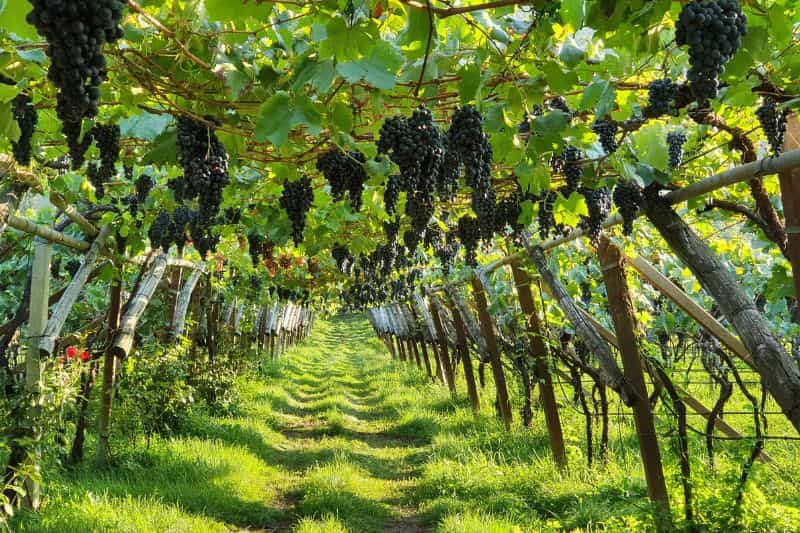
Choose trellis location
First step is to choose a sunny spot or wall, as grapevines need plenty of light to thrive. South or south‑west aspect is ideal. Also ensure soil is well drained, as grapevine dislikes excess moisture that can rot roots.
How to make a trellis?
Choice of materials
To build a trellis you will need:
- Support posts in treated wood or metal, weather‑ and pest‑resistant.
- Galvanised wire or stainless steel cables to bear weight of grapevines.
- Ground anchors (concrete), screws and suitable plugs.
- Basic tools: spade, spirit level, tape measure, drill.
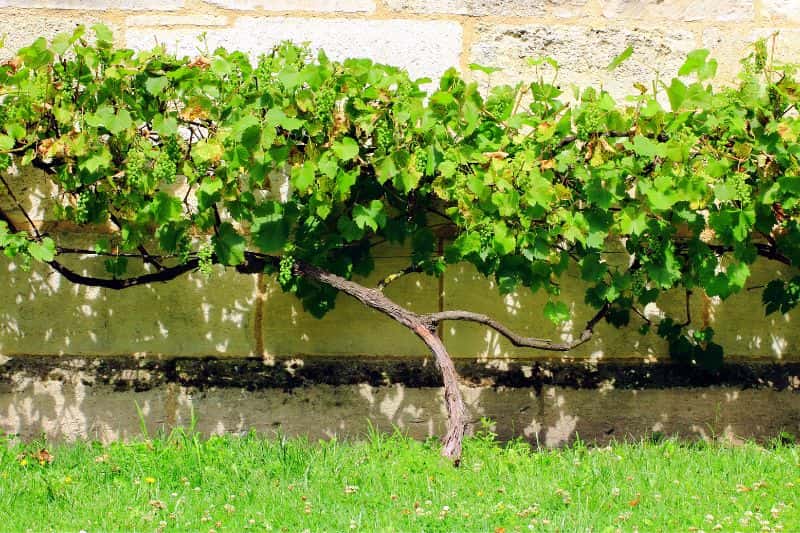
Construction steps
Here are the steps to build the trellis. Note that this trellis can be built in the middle of the garden, vertically or horizontally, or at the foot of a wall (a freestanding trellis).
1- Trellis design: Define trellis dimensions according to available space. A height of 2 metres is recommended to facilitate maintenance and harvest, with posts spaced 2 to 3 metres apart to allow good air circulation between plants.
2- Installing posts: Mark post positions and dig holes at least 60 cm deep to ensure stability. Set posts checking vertical alignment with a spirit level and secure them by filling holes with concrete or a mix of soil and gravel.
3- Fitting the wires:
- For an overhead trellis: attach and tension wires along top of posts. Cross wires to create a grid.
- For a vertical or wall trellis: start at the bottom, tension first wire about 50 cm from soil level, then add wires every 30 cm up to desired height.
Make sure wires are well tensioned and secured to support weight of grapevines.
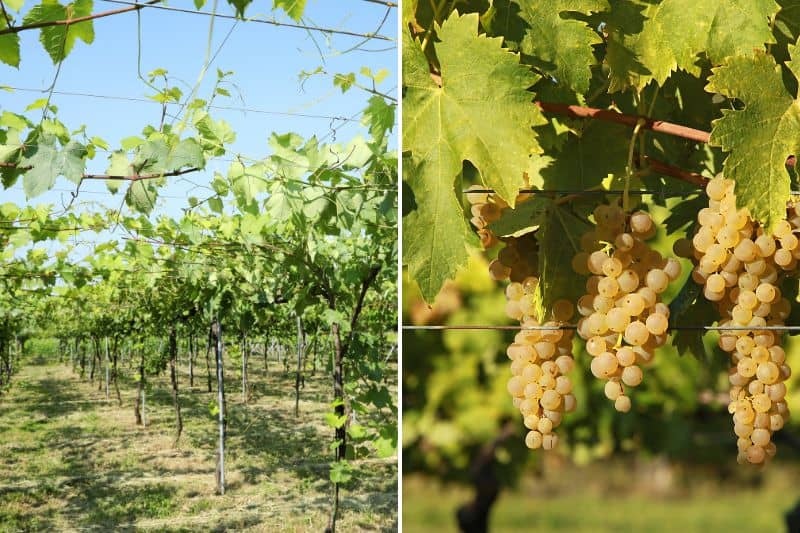
Planting grapevine
1- Choose a grapevine variety suited to your climate and taste in grapes. To help choose, read our articles: "Grapevine: choose the right variety".
Tip:
Plant different varieties to extend harvest season and diversify grape types. Find our grapevine varieties on our site.
2- Dig planting holes at base of trellis. For a vertical trellis, space holes at least 1 metre apart to avoid overcrowding and to promote good ventilation.
3- Add one spadeful of gravel to bottom of hole to improve drainage, as grapevine dislikes excess moisture.
4- Soak rootball of grapevine for 10–15 minutes in a bucket of water to hydrate. Then place rootball in hole, ensuring graft union is at least 10 cm above soil level. Graft union must not be buried.
5- Backfill hole with mix of one third compost to two thirds garden soil. If soil is heavy clay, also mix in coarse sand or gravel to prevent waterlogging. Firm soil.
6- Water well to remove air pockets.
7- Train young shoots along wires to help attachment. Use small plastic or fabric ties to gently secure branches without damaging them.
Trellis maintenance
Once trellis is installed, a few small tasks will help ensure vine health and good grape production:
- Grapevines need regular watering, especially during dry spells and during first two years after planting. However, avoid overwatering to reduce risk of fungal diseases.
- Prune grapevines in late winter or early spring before new growth starts.
- Regularly check for signs of disease or pest infestation.
To learn more, read our article: "Grapevine: planting, pruning and maintenance".
Alternative: grapevine on a pergola
Pergola is an excellent choice to grow grapevine. Not only will grapevine provide welcome shade on a sun‑exposed terrace, it can also spread its woody climbing stems horizontally, favouring grape production.
Various pergolas suitable for the garden are available commercially. Check with manufacturer that it will bear weight of grapevine, especially if building pergola yourself.
There are different materials, each offering a balance between aesthetics, durability and maintenance:
- Wood: offers a natural, warm look but requires regular upkeep and occasional wood stain. Prefer treated wood for outdoor use, which resists mould and pests better. Choose pine for low cost or cedar, teak or oak for greater durability and lifespan.
- Metal: Aluminium and steel are valued for rust resistance and durability. Metal structures can be painted to match garden surroundings, but beware of overheating in sun. This can be mitigated by using light‑coloured, reflective paints.
Whatever choice, run steel cables across top of structure so woody climbing stems can spread further.
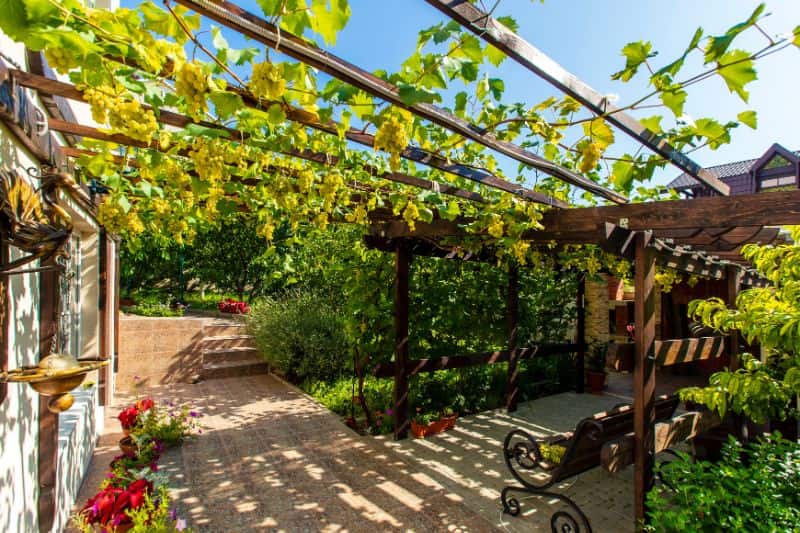






























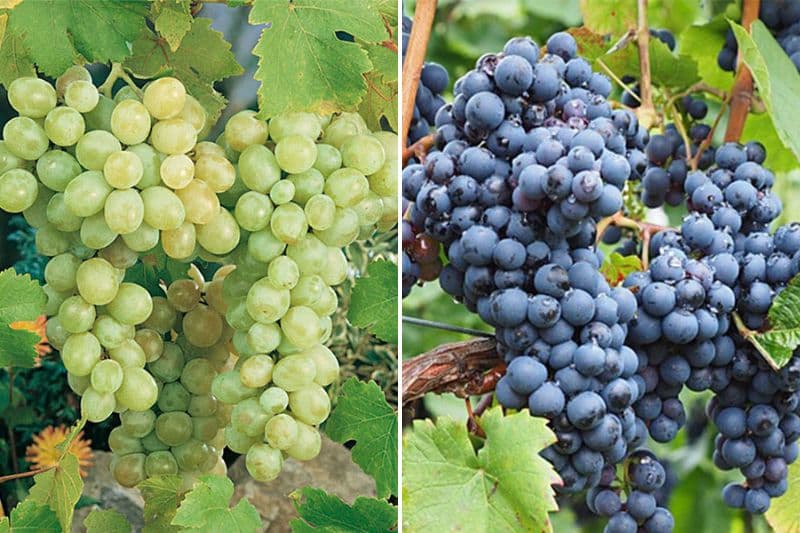


Comments